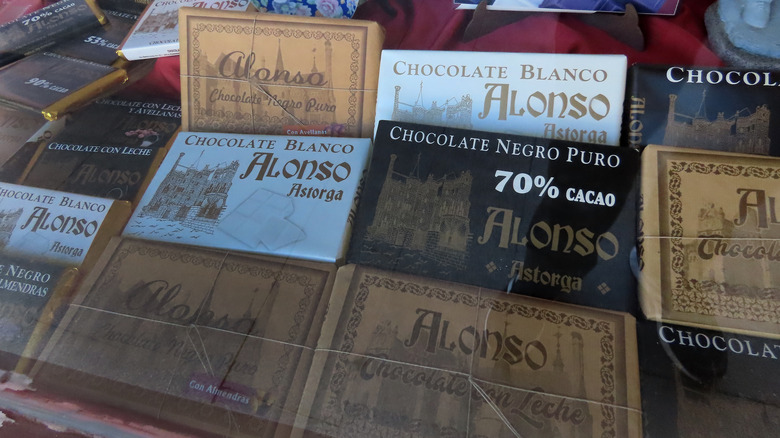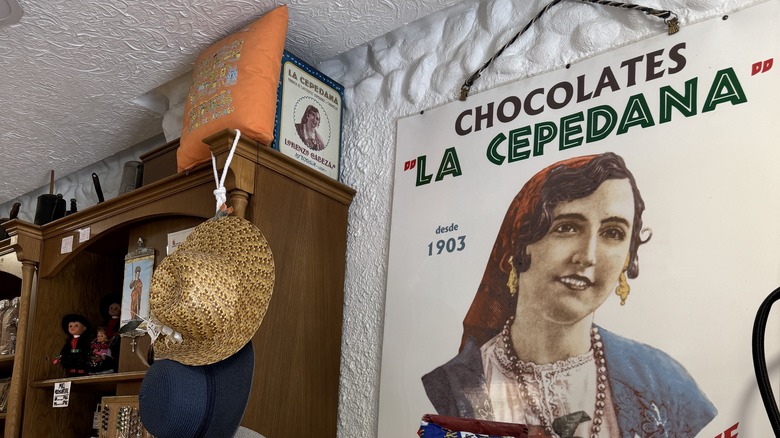What Makes Spanish Chocolate Unique?
Belgium and Switzerland are synonymous with European chocolate ... but Spain's chocolate tradition is just as vast. The public understanding of Spanish chocolate often surfaces via churros dipped in hot chocolate sauce, a must-try combo in Madrid. However, Spain is equally known for a solid version of the treat, best enjoyed in the country's Northwest. Specifically, the region of Castilla y León epitomizes the unique nature of Spanish chocolate, thanks to a history that's as rich as any dark chocolate.
On the Camino de Santiago, Astorga is Spain's chocolate haven. It's not necessarily a chocolate recipe that distinguishes the city's — and, therefore, Spain's — chocolate tradition, but, rather, all the stories and legends that trace the treat's origins. For instance, legend has it that explorer Hernán Cortés brought Aztec and Mayan chocolate to Spain circa the 1500s, after his daughter married the future Marquis of Astorga.
However, "the first document attesting to the presence of chocolate in Astorga dates back to 1636," Roberto Prieto Centeno, director of the Astorga Tourism Office, told Tasting Table. "It appears in an inventory of the belongings of the city's Marquise, Doña María de Toledo, conducted days after her death, which includes: 'A vessel from India for drinking chocolate.'" Regardless of its exact origin, chocolate emerged as a mainstay in Spain, with more than 400 manufacturers to date registered in Astorga alone. Nearly four centuries of history means that Spain's chocolatiers have had ample time to perfect their craft — and its taste.
Spanish chocolatiers are committed to quality
Fortunately for chocolate lovers, the longstanding history of Spanish chocolate materializes in its quality of taste. In the 1900s, dozens of chocolate factories cropped up across Astorga, transforming the city with chocolate production and, more importantly, curated options to try. "Selecting the finest cocoa varieties, along with meticulous care and attention to detail throughout the production process, are hallmarks of Astorga chocolate," explained Astorga's Roberto Prieto Centeno.
For even more proof that quality of cocoa defines Spanish chocolate, consider once again the treat's history in Castilla y León . "In the past, several Astorga chocolatiers supplied their products to the Spanish Royal Household, and some won awards for their high quality at international exhibitions," said Centeno. Today, you'll find no shortage of factories — and samples — across the city.
Visitors and hiking pilgrims alike can taste chocolate from multi-generational factories such as Hojaldres Alonso or La Cepedana. Likewise, Centeno suggested the Astorga Chocolate Museum, which is the oldest Spanish museum dedicated entirely to the namesake sweet. Oh, and for those interested in drinking their chocolate, you can still enjoy Northwest Spain's high-quality, historic cocoa as a thick, creamy hot chocolate. Spain's chocolate tastes delicious, no matter whether you take a sip or a bite.

